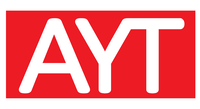Many sales reps are using digital and social media for the first time as they work remotely and without travel due to the coronavirus. If you are used to face-to-face meetings, networking events and shaking hands, I’ve got good news for you: the same strategies and tactics have made you so successful offline work online as well. You don’t need to reinvent the wheel; you just need to move the racetrack. If you are a B2B company, LinkedIn is a great place to start. Here are the first steps to take to set yourself up for success
Personal branding
As a sales rep, people buy you more than they buy your company. Before you start prospecting on LinkedIn, you have to establish a strong online brand – people want to talk to people, not companies, on social media, so having a strong brand is imperative.
When you reach out to someone, the first thing that person is going to do is check is your LinkedIn profile, so write it from the perspective of a potential client. What would they want to see to entice them to contact you? Write that.
Bring your offline network online
When using LinkedIn for business development, bring your offline network onto LinkedIn. Connect with the people in your current offline network (current and past clients, friends, family, fellow volunteers and current and former co-workers) – people that you know well enough that you can send a simple intro message without a lot of additional explanation about who you are, or why they would want to connect with you.
Post value-adding content
A great way to brand/establish yourself as an expert in your field is to post content. The content you distribute should be your target audience would find interesting. What content is that? Posts that
- Solve their pain points
- Tells them something they don’t know
- Showcases how much you know about the industry
- Displays how involved you are in the industry (day-in-the-life content in the field)
- ADDS VALUE – above all else, you should be looking to add value – that will set you apart
One area to stay away from on social media is pitching. Leave the posts about your products and services at the door. There will be time for that later, but you need to earn some trust first.
A few days after you post content, look through the likes and comments. Would any of these people be potential clients or referral opportunities? If so, reach out to them with an invitation to connect, thanking them for liking your post and asking them to connect.
Engage with others
This is typically the most overlooked part of social media. You need to engage with others.
After all, this is SOCIAL media, not ANTI-SOCIAL media, so you need to do more than send content, you need to engage with others as well. This means like, comment and share their content, send them private messages, congratulate them on milestones (promotions, job changes, new volunteer work)
One of the main reasons this is important is social media is all about reciprocity. If you engage with my content, I’m more inclined to engage with yours. That’s human nature.
So, if you are trying to get someone’s attention or stay top-of-mind, the easiest way to is to like or leave a comment on one of their posts.
So, when you have a few minutes before your next meeting or at night in front of the TV, instead of opening up Facebook to engage with friends, open up the LinkedIn app, and engage with your connections. You’ll build stronger relationships that will payoff down the line.
Find your target audience
First, you have to determine your target audience (and no, “everyone” is not a target audience). Be as specific as possible.
Second, find them on LinkedIn using the search bar and filtering the results down to a manageable size.
Reach out in a personalized way
Now that you’ve got a rock star profile, have established yourself as a thought leader and are engaging with others, it’s time to reach out to prospects and centers of influence.
Start by viewing their profile, and look for commonalties – common connections are the best. Just like in the offline world, if you can get a common connection to introduce you have the best chance to start a relationship.
If you don’t have common connections, look for other commonalities (attending the same school, worked for the same company, volunteer for the same organization). Then, reference these in your invitation to connect (Note: Always personalize the invitation.) This person doesn’t know you. There has to be a reason for them to accept. Make the invite all about your target audience.
Conclusion
This may seem like a lot to take in, but most of this you do every day offline. So just bring those tactics online, follow this approach and you’ll be able to build a large network on LinkedIn. From there, use those great relationship skills you have used for years to build a rapport.




